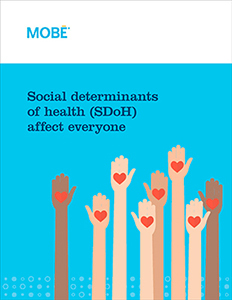



We used to think access and quality of care were the drivers of health, but now we know that’s only part of the equation. What if the strongest drivers of health outcomes are beyond the reach of today’s health care system? Surprisingly, the latest research backs up that conclusion.
Researchers estimate that the health care system only drives 20% of a person’s health status. Socioeconomic factors, physical environment, and health behaviors determine the rest—80%.
SDoH are the conditions in which people live, learn, work, and play. And they influence health equity and health outcomes—for better or worse. They all profoundly impact a person’s health, and when the impact is potentially negative, they’re called SDoH risk factors.
The U.S. spends more than $3.8 trillion a year on health care. And 8.4% of that total—or $320 billion a year—can be attributed to health inequities resulting from SDoH risk factors. Who pays? Everyone.
Incorporating needed healthy habits into daily life is harder for people experiencing SDoH risk factors. Organizations can improve the health outcomes of their covered populations by finding a solution that considers everything that shapes a person, from cultural background to physical, mental, and social circumstances and everything in between. Most health and wellness programs don't discover or address SDoH risk factors, but MOBE does. Download the full whitepaper to learn more.

